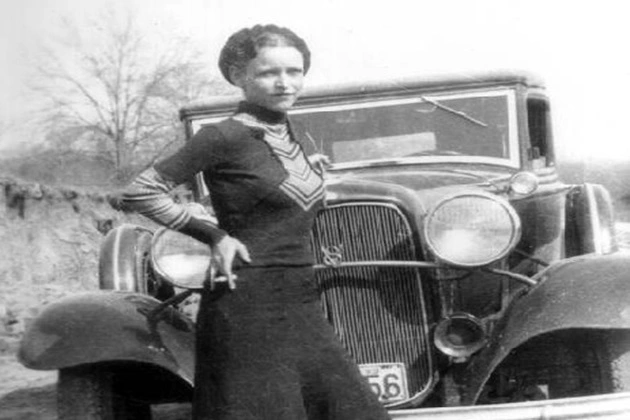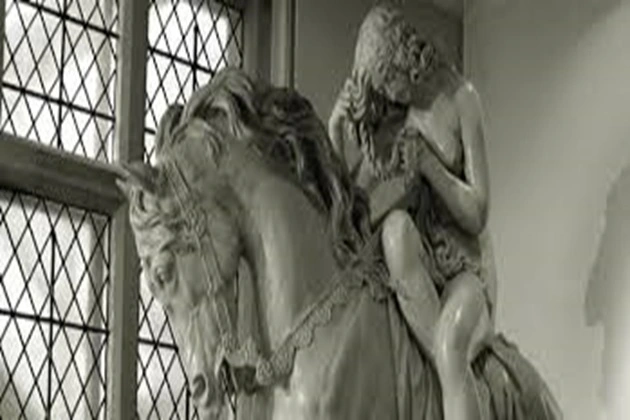5 Most Scandalous Women in History

Any woman who has broken social conventions that are based on standards for a specific era is considered scandalous. Short, trimmed hair used to be sufficient for this kind of status.
No renowned fighters or pirates will be present, but there will be women who accomplished far more than their destiny had planned for them to, despite the dangers involved.
1. Bonnie Parker

Bonnie was born on October 1, 1910, in Texas. After the death of the head of the family, the mother with three children moved to Colorado, where Boney had to work as a seamstress from an early age.
Back then, women were paid twice or even three times less than men, but there was little choice. Despite the poverty bordering on poverty, the girl showed excellent school results. In addition, her love of acting and amazing ability to improvise were noted. This testified to a lively mind and a rich imagination, which would soon result in something completely unpredictable.
After graduating from high school, Bonnie got married and got a job as a waitress at Cafe Mark, but the onset of the Great Depression made its adjustments. The cafe closed, and the husband was also left without a job. Soon, the young family broke up.
However, there was no official divorce, and therefore, the girl wore an engagement ring until her death. After the New Year holidays in 1930, Bonnie met a young man named Clyde. A strong bond was formed between the couple, and since then, Bonnie has played the role of not only a friend but also a faithful partner in all future crimes.
It becomes clear from Bonnie’s diaries that she never doubted the transience of her life. After the news of the death of his ex-wife, Thornton, who is in prison, will say the following: “I’m glad they had so much fun. It’s much better than being caught.”
2.Hypatia

Even though Hypatia was a philosopher, astronomer, and mathematician, almost all of her works have been lost. Therefore, we judge from the texts that contain information about the life and deeds of the scholar. The daughter of a famous intellectual and orator, she was born in Alexandria and caught the late Roman Empire and its collapse. Educated as a man, she did jobs typical of men. She became a teacher and often gave speeches in the square.
Her wit and eloquence made Hypatia famous and also very popular among the pagan population, who were opposed to the growing strength of Christianity. Being very conservative, Hypatia thwarted the political ambitions of the ministers of the new religion, thus incurring their wrath.
Today, she would have been condemned for offending the feelings of believers, but in 415, such articles did not exist. The crowd dragged the woman from the chariot to a nearby church. There, Hypatia was beaten to death with tiles, after which her body was dismembered. Officially, she was accused of witchcraft, but it was apparent to any enlightened person where the actual cause lay.
The death of Hypatia shook Alexandria, and the news spread throughout the Eastern Roman Empire. Anti-Christian revolts broke out in many places, with pogroms and similarly violent reprisals.
3. Helen of Troy

In any film or book, Helen appears as a positive character, almost a hero, equal to Hector or Athena herself. However, all she did was publicly humiliate her husband, whom she had previously chosen herself.
Then, dozens of kings and the best warriors from Greece came to Sparta to be viewed. Ajax and Odysseus were among them, but Helen’s eyes rested on Menelaus.
Helen, then still Spartan, probably did not find happiness in her native polis, but Paris certainly did not drag her by force to the Trojan ship. However, after discovering another passenger, the boat did not turn back.
These events led to a ten-year-long large-scale war and the fall of a prosperous city. Elena was not a warrior, did not understand the sciences, and motivated the youngest Trojan princes.
However, Paris is also married when he meets Helen. Later, Prince Oenone’s first wife refused to help him, and Paris died of his wounds. Oenone herself did not survive this and hung herself in grief. After the fall of Troy, Elena the Beautiful returned to Sparta, where she lived a quiet and inconspicuous life.
4. Mary Wollstonecraft

The writer argued that women are not at a lower stage of development than men. Can you imagine? This idea was dangerous for England in the second half of the XVIII century. Not all the bonfires of the Inquisition had gone out yet; witches were still burned or put to the test of water.
This is when a bound person is lowered into the river; if he survives, it is God’s will, not a witch. It is easy to guess that the result depended on the performer’s will. Two of Mary’s works are the most famous. “Protection of Human Rights” in 1790, where the writer condemned the monarchy as a phenomenon and all the privileges of the ruling class. “In Defense of Women’s Rights” will be released two years later.
The essay contained reflections on the topic of equality. Mary Wollstonecraft insisted that women were as necessary to the nation as men. Instead of seeing women as useless jewelry, she suggested seeing them as people. To do this, it is essential to equalize the rights, first of all, to receive education. No one has ever written about this so openly before, so Mary Wollstonecraft is considered the first feminist, although today, this term is completely discredited.
5. Lady Godiva

Godiva means “given by God.” The English Countess from Coventry has found a reputation as a defender of the people. Her subjects noted her almost maternal love for the ordinary people, while her husband, Count Leofric, on the contrary, imposed excessive taxes on the peasants.
The current situation saddened Lady Godiva, and during another feast, when everyone was pretty drunk, the issue was raised again. The husband set a condition: He would reduce taxes for his subjects if his wife rode naked on a horse through the whole city. It was a joke that no countess or other noble person would ever go for—none except Godiva.
The woman decided to take this step, putting the interests of the people above her own shame. She could only cover herself with her long hair. However, no people were on the streets during the trip.
The news of the First Lady’s upcoming visit spread throughout Coventry. The townspeople reciprocated; all the windows were shuttered, and no soul was around. Thus, the condition was fulfilled, although no one saw the naked horsewoman.
The story has clear signs of legend, and different couples of those years could claim the role of these spouses. However, information about Godiva and her trip can be found in several sources, including Ranulf Higden, one of the most authoritative chroniclers.
Anyway, King Edward I of England gave instructions on finding out the story’s authenticity. Then it turned out that in 1057, a certain Count Leofric died, and after that, taxes were not really collected in the city of Coventry for a long time.




